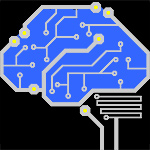Biblio
.
2017. Eccentricity Dependent Deep Neural Networks for Modeling Human Vision. Vision Sciences Society.
.
2017. Eccentricity Dependent Deep Neural Networks: Modeling Invariance in Human Vision. AAAI Spring Symposium Series, Science of Intelligence.
.
2017. On the Human Visual System Invariance to Translation and Scale. Vision Sciences Society.
.
2017. Is the Human Visual System Invariant to Translation and Scale? AAAI Spring Symposium Series, Science of Intelligence.
.
2017. Invariant Recognition Predicts Tuning of Neurons in Sensory Cortex. Computational and Cognitive Neuroscience of Vision. :85-104.
.
2017. View-tolerant face recognition and Hebbian learning imply mirror-symmetric neural tuning to head orientation. Current Biology. 27:1-6.
.
2017. Why and when can deep-but not shallow-networks avoid the curse of dimensionality: A review. International Journal of Automation and Computing. :1-17.
.
2016. Deep Learning: Mathematics and Neuroscience. A Sponsored Supplement to Science. Brain-Inspired intelligent robotics: The intersection of robotics and neuroscience:9-12.
.
2016. Holographic Embeddings of Knowledge Graphs. Thirtieth AAAI Conference on Artificial Intelligence (AAAI-16).
.
2016. How Important Is Weight Symmetry in Backpropagation? Thirtieth AAAI Conference on Artificial Intelligence (AAAI-16).
.
2016. Introduction Special issue: Deep learning. Information and Inference. 5:103-104.
.
2016. On invariance and selectivity in representation learning. Information and Inference: A Journal of the IMA. :iaw009.
.
2016. Neural Tuning Size in a Model of Primate Visual Processing Accounts for Three Key Markers of Holistic Face Processing. Public Library of Science | PLoS ONE. 1(3): e0150980
.
2016. Object and Scene Perception. From Neuron to Cognition via Computational Neuroscience.
.
2016. Turing++ Questions: A Test for the Science of (Human) Intelligence.. AI Magazine. 37(1):73-77.
